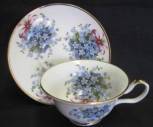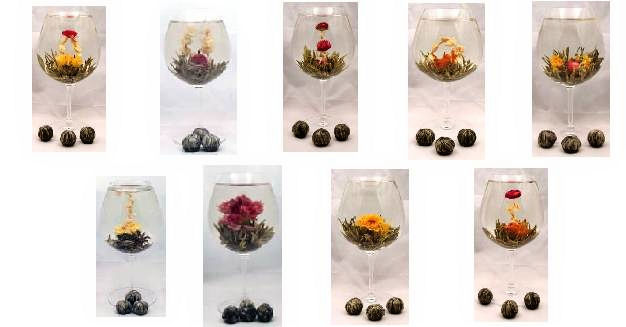Tea Etiquette
We have come a long way from the straight-laced Victorian tea times when tea etiquette was first established, but we can still set aside our fast paced lives for a little bit of gentility. So, lets brush up on our manners and spend a couple of hours (or longer) treating our self and friends to a proper tea.
Invitations Invitations are a must when inviting friends to an afternoon tea. This gives the hostess the opportunity to instruct her guests on what to wear or bring to the tea. One such example would be a tea being held in the garden. The hostess would include on the invitation the need to wear a hat. More well to-do Victorian ladies would bring their own tea cup in an elaborately designed box, so if you would like to host a tea in which your guests bring along their tea cup, this would need to be written explicitly on the invitation. Tea Party Invitation Ideas
The Table
An intimate gathering with just a few friends allows for all the guests to be seated at one table and the use of china. The pieces do not have to match and bone china is not necessary. A proper tea does not mean you have to run out and buy lots of expensive things. If you are short a few items, ask a close friend or relative to borrow the things you need to complete your table. A nice tablecloth without stains or holes is essential along with cloth or linen napkins. Of course you will need cups and saucers , plates, tea spoons, sugar bowl, sugar tongs (to serve the sugar cubes), tea strainer (if the tea leaves were put directly in the pot and not in a tea ball), and lemon dish.Other items for the tea table will depend on what is being served. If scones are offered, knives will be needed to cut the scones in half. Small bowls of jams, curds, and clotted cream will be necessary along with a serving spoon for each bowl. Forks will be needed if cake is to be served.
Once everybody is seated, the hostess pours the tea and always ensures that each guest's cup is full. The hostess then offers milk (never cream, since it is too heavy for tea), sugar, or lemon. Milk and lemon must never be added to the same cup, since citrus instantly spoils the milk.
How to Properly Drink your Tea First and foremost never hold your cup with your pinkie finger extended. This is improper and in most social settings is considered rude. Place your index finger into the handle of the cup up to the knuckle while placing your thumb on the top of the handle to secure the cup. The bottom of the handle should then rest on your third finger. The fourth and fifth fingers should curve back towards your wrist.
At one time it was traditional to pour the milk into the cup before the tea. This was done to prevent the glaze on delicate tea cups from cracking. We do not have that problem today, so add the milk after the tea so that you can judge how much to use based on the color change.
When stirring your tea, be careful not to clink your spoon against the cup. Gently swish the spoon back and forth without touching the sides of the cup. When through stirring, remove the spoon and place it on the saucer behind the tea cup and to the right of the handle. Of course, never take a drink of your tea without removing the spoon first, and please never, ever sip from the spoon.
If seated at a table, do not lift the saucer (this is only proper if standing; then lift the saucer with the cup.) When you are taking a sip of tea do not look around at the other guests, but lower your eyes so you can see what you are doing and not spill your tea down the front of your blouse or dress.
When your cup is low try to avoid the temptation of swirling the tea in the cup. How embarrassing if some should happen to slosh onto the tablecloth and we all know how easily tea can stain.
Enjoying the Traditional Fare Scones are a traditional part of a proper tea. Split the scone with a knife. Since the knife is now used, lay it gently on the side of your plate. Jam or curds is usually placed on the scone and then top off with a dollop of clotted cream. Simply spoon a small amount of jam or curds onto your plate, as well as some of the clotted cream. Spread the jam, curds, and clotted cream onto your scone. Never use the serving spoon for this task.
Be sure to take small bites, since attending a tea is a social occasion and you will want to participate in the conversation without always having a full mouth. Chew and swallow completely before taking a drink of tea, since it is hot and is not meant to wash the food down.
Don't Forget Your Napkin Each place setting should have a napkin. Sometimes it is placed on the tea plate and other times beside the plate. There are several layouts for the napkin. Buffet style teas often have the napkins stacked beside the silverware. Pick up the napkin unfold it and place it on your lap. If you must leave the table for any reason, simply lay the napkin in your chair and not on the table.
Never blot or wipe your lipstick with a linen or cloth napkin. Lipstick stains rarely come out in the wash.
Never, ever use your napkin as a handkerchief. Please excuse yourself from the table and go to the ladies room.
The hostess will signal the end of the tea by picking up her napkin.
Everyone else will then pick up their napkin by the center and loosely lay to the left of their plate.
These are the basic rules and are not all that hard to remember and follow. If you want to practice your manners before hosting or attending a tea, simply have a cup of tea and a sandwich with a close friend. If you have children once in a while have a manners lunch in which everyone practices being proper. This can be a learning experience and lots of fun at the same time. Most important is to just be as polite and considerate as possible.


